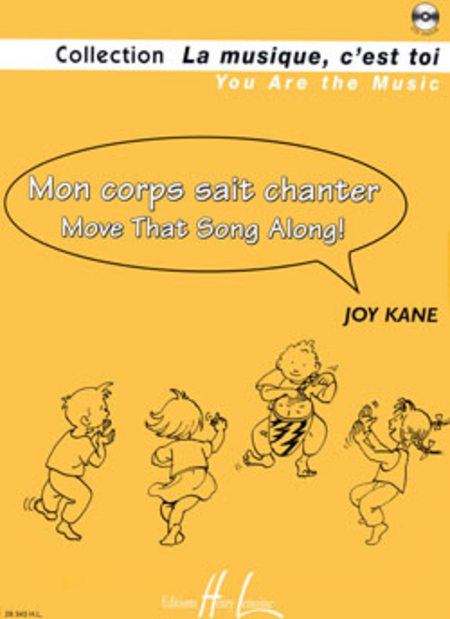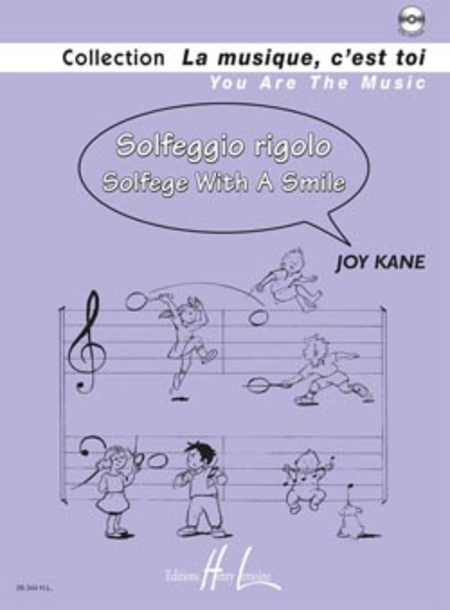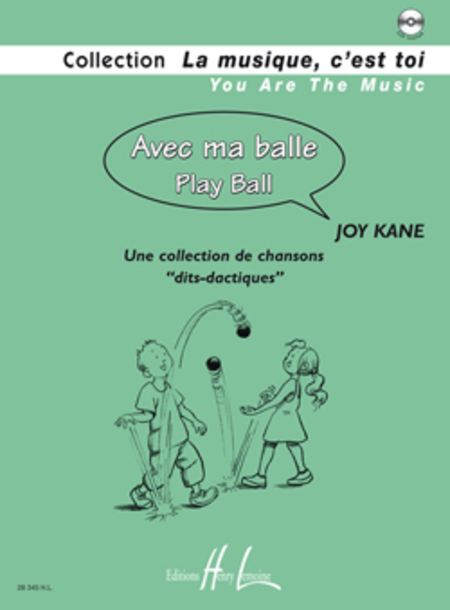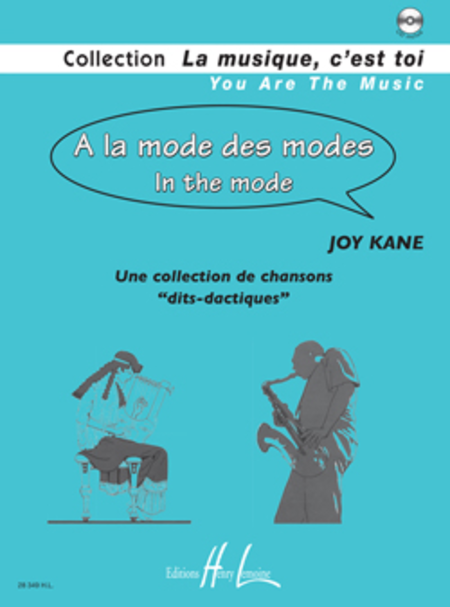You are the Music!
You are the Music is a collection of six progressive song books meant to combine singing, gesture and movement. Each book contains scores and an accompanying CD.To purchase any book in the series, please contact me at joykanemusic@earthlink.net for availability and shipping information!
 |
Where to Find Do$30Where to Find Do? is a book that introduces the 8 notes of the C scale, starting at middle C, to its octave C, or Do. Each note is represented by a song which features it, describes its place of the staff, and reiterates the name and the sound of the notes many times so as to reinforce sense memory of the feel of its pitch vocally, associated with the sonority of its solfege name. Meanwhile, each song engenderes movement in gesture and/or in space so as to "locate" or associate that note with muscle memory, and high and low in relationto the body, space and the staff, as well as vocal aparatus. The texts of some of the songs play on alliteration, with multiple repetitions of a sound such as: "Do-ris eats a Do-nut" with the "do" sound falling on the note, of course. |

| Move That Song Along$30Move That Song Along us about exactly that: way of moving to different pieces of music with varying rhythms, tempi, and note values. Recognizing the beat, the sounds of long notes, subdivisions, rests, measures and phrases through first hearing them and experiencing them through movement and gesture, then learning their names by singing them, and finally connecting those experiences with the symbols on the page... In other words, hearing and experienc precedes reading and writing. There are tunes in 2/4, 3/4, 4/4. Tunes in binary and ternary rhythms and lots of rests. Most of the tunes are written in Canon form so they can not only be sung, but danced by more than one group at a time. |
 |
Move That Song Further Along$30In Move That Song Further Along, the rhythms and movement mentioned in Move That Song Along become more detailed and specific, sixteenth notes, tied and dotted notes, syncopations are meant to be expressed in movement and song while the Minuet, Sarabande, Ragtime can be staged as dances. As in the other books in this series, most of the pieces are written in Canon form, singing the canons in tune refines the earl expressing them through movements and gesture creates exciting polyrhythms and fosters true "esprit du corps"! |
 |
Solfege with a Smile$30Solfege with a Smile starts with a movement, singing game which makes finding the Tonic of a piece a lively experience and cha-cha0cha which defines the meaning and significance of the Tonic in Music. Further pieces deal with intervals and polychords. The book covers mahor and minor polychords and intervals, from seconds and bichords through sevenths, heptachords and octaves. THere are pieces which require altering notes, with sharps or flats, then cancelling the accidentals with natural signs. Some pieces reuire singing repeated notes, other contain the featured interval or polychord in the accompaniement for further eartraining. Putting the defining word in the lyric as one sings the very same polychord and interval reenforces hearing recognition and identification... enabling the musician to access it readily for improvisation, composition and memorization. |

| Play Ball$30Play Ball introduces bouncing, rolling, tossing and passing a ball (or several) in 2/4, 3/4, 4/4, 5/4, 6/4 or 3/8 meter to musical accompaniment that just fits! Singing the text reinforces the feeling of meter instead of just following "counts". Playing these ball games with partners enhances "esprit du corps" while also being just plain fun! |
 |
In The Mode$30In addition to the modes called "Greek Modes" one will find the Whole Tone, Chromatic, Diminished (Octatonic) scales, as well as the Blues scale, Pentatonic and minor Pentatonic and the minor scales melodic and harmonic. Each mode is illustrated by its "formula" (ex: The Dorian Mode is comprised of a minor pentachord, raised 6th and 7th degrees). The basic "formula" is then followed by one or more tunes in the mode to be studied, the text of which describes or illustrates the modes, and whose cadence is one which is typical of that mode. While this book is useful for all musicians, it is specifically recommended for Jazz Musicians. In the second part of the book, there is an interesting comparison of the diatonic scales as sung from C, or Do, and its corresponding mode, ex: the scale of A flat sung from C or Do sounds exactly like the Phrygian Mode, melodically. These pieces illustrate the differences in harmonization and most importantly, the appropriate modal cadences. |
